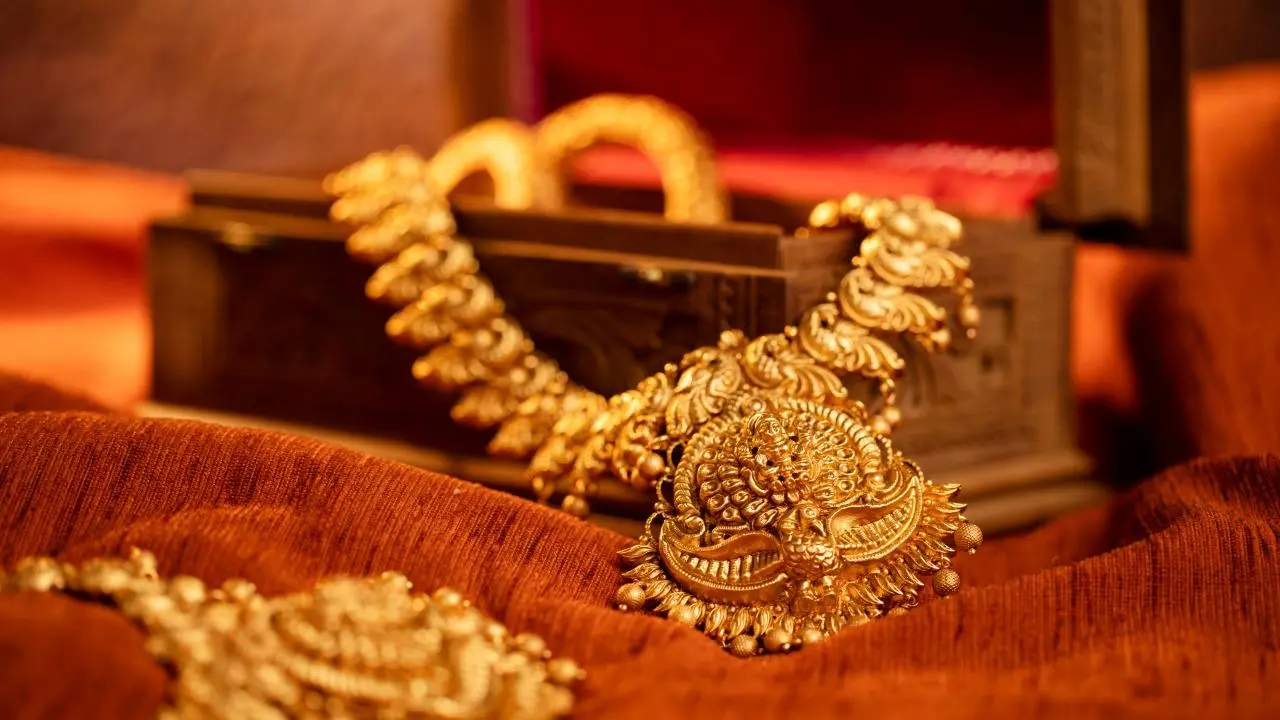Gold jewelry holds a cherished place in cultures around the world, symbolizing beauty, wealth, and heritage. Traditional gold jewelry designs are not only exquisite adornments but also cultural artifacts that connect generations and tell stories of a rich past. From intricate craftsmanship to symbolic motifs, traditional gold jewelry designs encapsulate the essence of heritage and elegance. In this comprehensive article, we’ll delve into the world of traditional gold jewelry designs, their historical significance, iconic motifs, cultural diversity, and tips for selecting pieces that resonate with your personal style.
Section 1: The Historical Significance of Traditional Gold Jewelry
- Ancient Origins: Gold has been used to create jewelry for thousands of years, dating back to ancient civilizations like Egypt, Mesopotamia, and the Indus Valley.
- Cultural Significance: In many cultures, traditional gold jewelry is worn during ceremonies, weddings, festivals, and other significant life events. It holds symbolic value and reflects cultural identity.
- Artistry and Craftsmanship: The art of creating traditional gold jewelry involves intricate techniques passed down through generations, showcasing the skill and dedication of artisans.
Section 2: Iconic Motifs in Traditional Gold Jewelry
- Floral Designs: Flowers have been a popular motif in traditional gold jewelry, symbolizing growth, beauty, and femininity. Intricate flower patterns are often featured in necklaces, earrings, and bracelets.
- Peacock Motif: The peacock, with its vibrant plumage, is a revered motif in Indian traditional jewelry, representing grace, beauty, and divinity.
- Filigree Work: Filigree involves intricate wirework to create delicate patterns and designs. This technique is used to craft pieces like pendants, earrings, and rings.
- Coin Jewelry: Some traditional jewelry designs incorporate old coins, signifying prosperity, wealth, and historical significance.
- Amulets and Talismans: Certain pieces, like amulets and talismans, are believed to bring protection, good luck, and positive energies to the wearer.
Section 3: Cultural Diversity in Traditional Gold Jewelry
- Indian Traditional Gold Jewelry: India boasts a rich variety of traditional gold jewelry, including Kundan, Jadau, Temple, and Meenakari designs. These pieces often feature intricate craftsmanship and gemstone embellishments.
- Middle Eastern Traditional Gold Jewelry: Middle Eastern jewelry is known for its opulent designs, often featuring geometric patterns, calligraphy, and intricate detailing.
- Chinese Traditional Gold Jewelry: Chinese gold jewelry often incorporates symbols of luck, longevity, and prosperity. Pieces may include intricately carved jade, symbolic animals, and zodiac motifs.
- African Traditional Gold Jewelry: African jewelry designs vary across regions and tribes, featuring bold and intricate patterns that hold cultural significance and tell stories of heritage.
Section 4: Selecting Traditional Gold Jewelry
- Understand Your Style: Consider your personal style and preferences. Do you gravitate toward intricate designs, minimalist pieces, or statement jewelry?
- Occasion and Purpose: Think about when and where you intend to wear the jewelry. Some pieces are ideal for weddings and formal events, while others can be worn daily.
- Quality and Purity: Verify the gold’s purity using hallmarks or certifications. Common purities include 24K (pure gold), 22K, 18K, and 14K.
- Craftsmanship: Examine the craftsmanship of the piece, including the detailing, symmetry, and finish. Traditional jewelry often involves handwork, so imperfections can add character.
- Gemstone Selection: If the jewelry features gemstones, research their significance, quality, and authenticity to ensure they align with your preferences.
Section 5: Preserving and Caring for Traditional Gold Jewelry
- Storage: Store your traditional gold jewelry pieces separately in soft cloth pouches or jewelry boxes to prevent scratching and tangling.
- Cleaning: Gently clean your jewelry with warm soapy water and a soft brush. Avoid abrasive cleaners that can damage the metal and gemstones.
- Avoid Harsh Chemicals: Remove your jewelry before using cleaning products, swimming in chlorinated water, or applying perfumes and lotions.
- Regular Maintenance: Periodically have your jewelry professionally inspected and cleaned to maintain its shine and integrity.
Section 6: Embracing Timeless Elegance
Traditional gold jewelry designs are more than just accessories; they are gateways to heritage, stories, and cultural legacies. When you adorn yourself with these exquisite pieces, you’re not just wearing gold – you’re wearing the artistry of generations, the symbolism of motifs, and the beauty of a timeless legacy. Whether you’re celebrating a milestone, cherishing cultural heritage, or expressing your personal style, traditional gold jewelry is a manifestation of elegance, identity, and the connection between the past and the present. As you explore the vast world of traditional gold jewelry designs, remember that each piece holds within it the power to transform you into a living canvas of history, culture, and enduring beauty.
